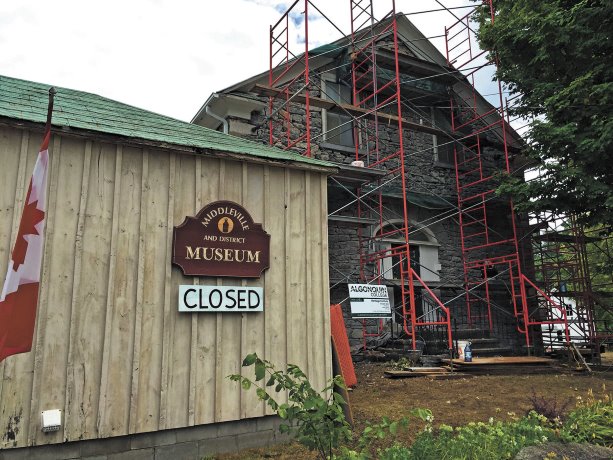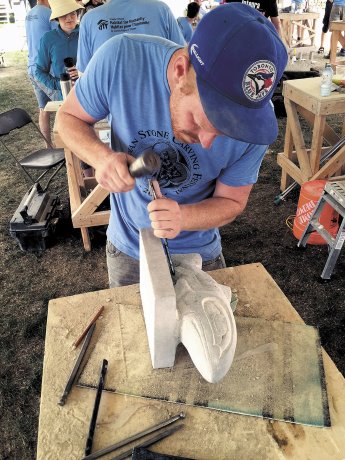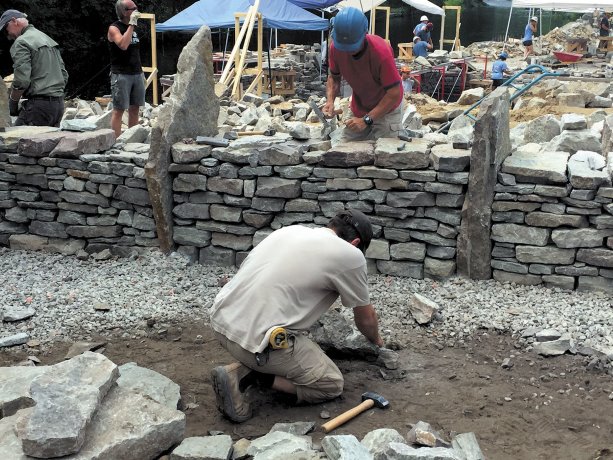With Canada’s heritage masonry buildings starting to hit 150 to 200 years of age the race is on to preserve them for future generations.
Repair, renovating, rehabilitating, repurposing and even maintaining historic stone structures isn’t just a matter of mixing some mortar and slapping in a few bricks; it’s a skilled trade which requires knowledge of heritage construction technology and materials as well as sensitivity to the architecture of the time.
The ongoing $3 billion renovations of the Parliament buildings in Ottawa are a prime example of the need for qualified heritage stone masons and many of them are coming from two Ontario schools which have specific programs.
Willowbank School of Restoration Arts in Queenston and Algonquin College in Perth both have heritage programs which include heritage stone masonry.
"St. Francis of Assisi said when you build with your hands, that’s labour, when you build with your hands and head that’s craft and when you build with your hands, head and heart, that’s art and that’s how we like to think of heritage stone masonry," says Chris Hahn of Algonquin College’s Perth campus where the 45-week course covers heritage masonry techniques from dry stone walls to historic fireplace design to simple repairs and stone block carving.
"You learn things like how to pull back a stone wall which is leaning without tearing it all down. You’re not just preserving a building or a wall. You’re preserving and maintaining the craft that went into that structure. In Japan they have buildings which are 1,000 years old but they have been torn down, every 300 or 400 years and then rebuilt exactly the same way so there’s a history of the craftsmanship."
He said while the initial structures in Canada built by settlers where literally hewn from wood harvested from the land around them, stone structures started appearing about 200 years ago.
Those structures and others which came after them, right through the turn of the century through classic architectural eras such as the art deco period up to post war masonry techniques.
He said with the inventory of heritage, or at least historic structures, between Windsor and Montreal or Quebec City, there will be a growing demand for skilled masons who understand heritage structures.
"There’s also an energy factor in that you’ve already got expended energy which went into creating these structures. It doesn’t make sense in a lot of cases just to tear them down and waste that energy and spend more energy to create new structures," he said.
One 2003 reference suggest there were 128,000 residential properties with heritage stone components across Ontario alone, Hahn said, including high profile structures like 24 Sussex Drive, the Prime Minister’s official residence which is in dire need of restoration.
"So a lot of our graduated students go where the work is and that’s right here in Ontario," he said.
Willowbank, set in the 15-acre grounds of the historical Willowbank Estate with its Greek revival mansion built in 1880s near Queenston, is a private college offering a three-year post secondary diploma in conservation skills and theory which includes stone and mortar techniques, basic geology, quarrying, stone dressing and coursing, stone carving, lime mortars and other conservation techniques.
Crystal Bossio, executive director at Willowbank says graduates often go into the trades as masons directly while others go on to work in municipal planning and building departments or with architectural and engineering firms.
"Over the years we’ve seen a lot of examples of modern masonry being applied to heritage projects and creating further problems," Bossio said. "They’ve used the wrong mortar or they’ve used Portland cement which just wasn’t around."
Stone buildings, like any moderns wall systems, were engineered for specific performance. While today’s envelopes are air tight and insulated, heritage stone walls were designed to breathe. Tampering with that design element just created problems, she said, thus the need for education.
The 10-year-old program accepts 12 to 15 students a year and offers a mix of classroom and hands on instruction from faculty working in the field.
"We even do a traditional lime burn once a year," she said. "It’s very hands on."

1/2
Photo:



Recent Comments
comments for this post are closed